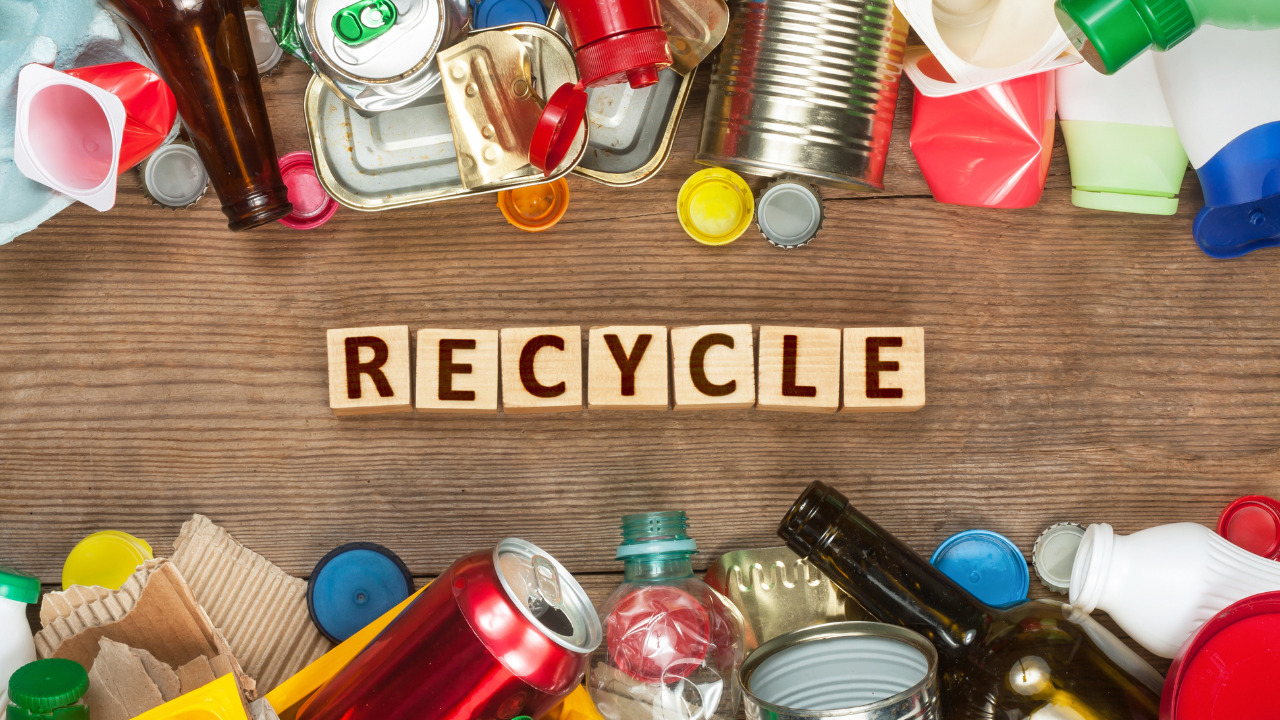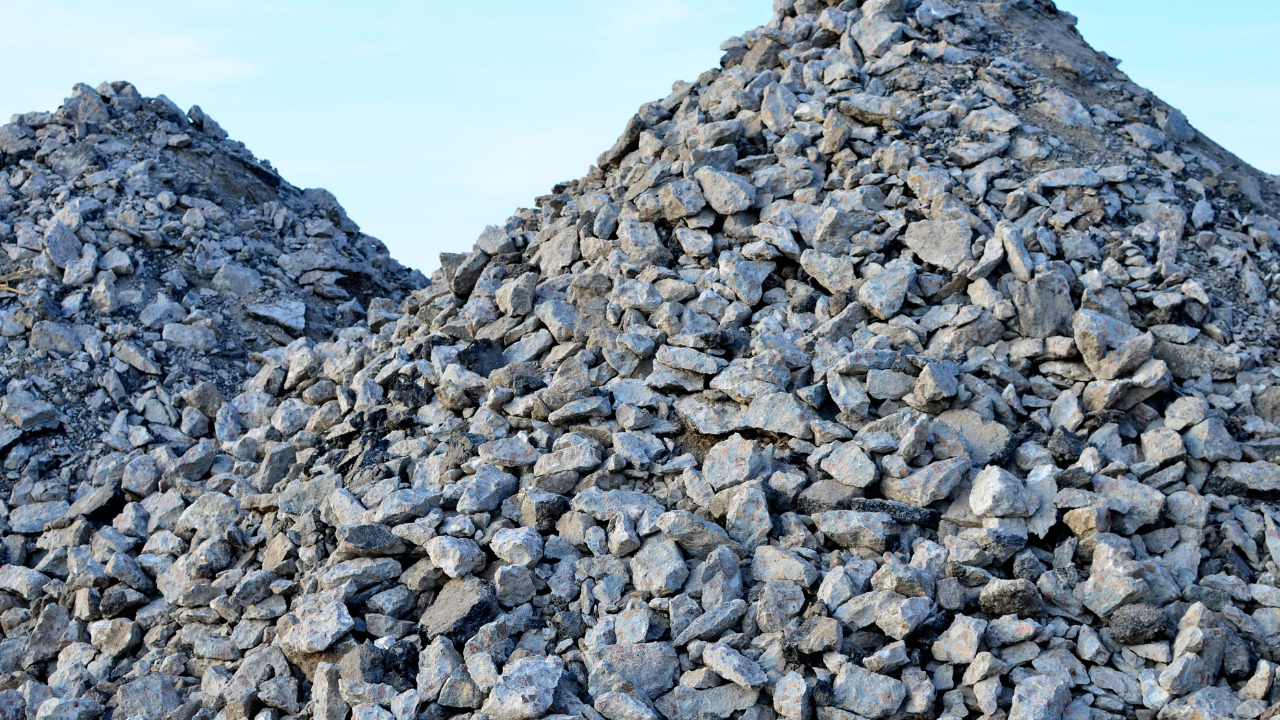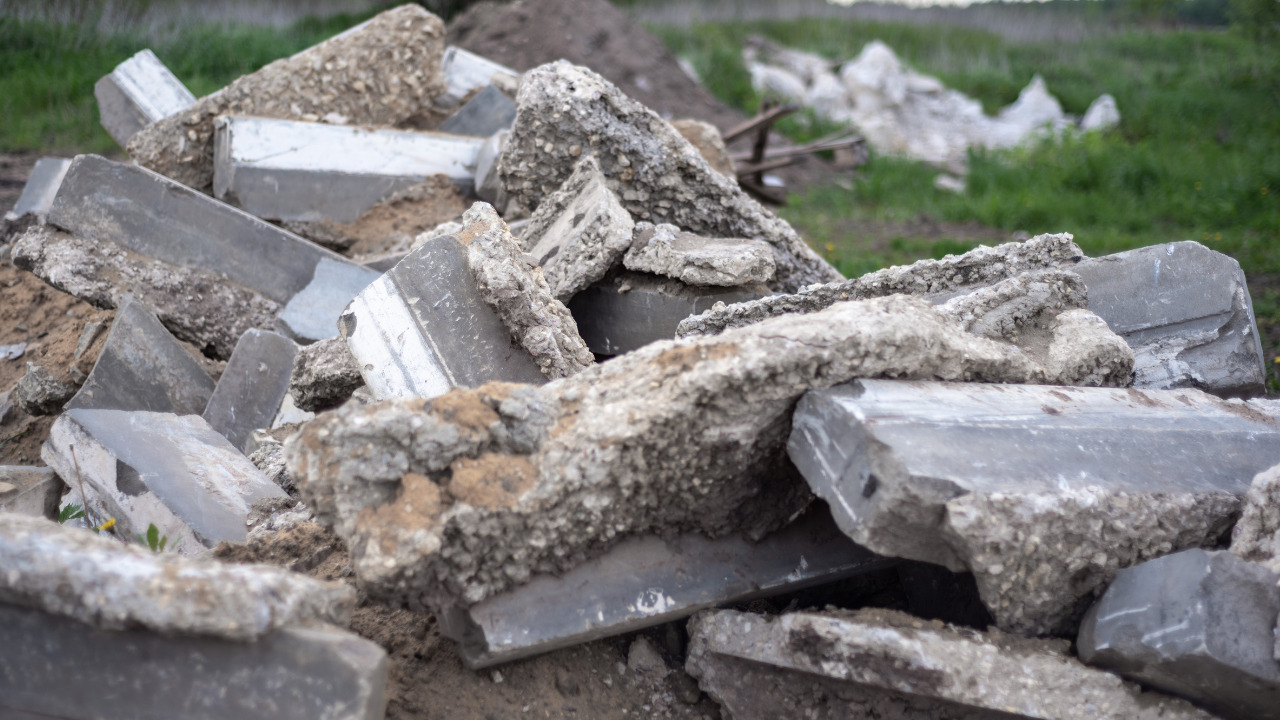Concrete is a structural material comprising a hard, chemically inert particulate substance known as aggregate that is bonded together by cement and water. It is the most widely used construction material around the world.
We often come across structures or buildings that are stripped off the ground by demolition practices in a controlled manner and the debris or demolition waste is bid adieu in landfills. Heaps of concrete are generated from even a single structure that is razed to the ground. Imagine our landfills getting out of accommodation capacity in coming years; what is the next stop-by solution to our surging demolition wastes?
Our pursuit of erecting better structures by destroying the older ones is never to be slaked. The approach of urbanization is further proving to a be an attempt of coercing natural environment.
With reduced urban land for newer buildings, many construction works around the world begin by demolishing buildings, sidewalks, foundations, driveways, and other concrete structures. The stripping away of hundreds of buildings each day creates demolition waste. As a normal practice, this waste is disposed off in landfills, never to be used again.
The demolition practices around the world create a sizable volume of heavy and dense materials to deal with. What if the concrete debris can actually be reused? Sounds great, right?
Concrete can be recycled and utilized for future construction works. Recycling concrete, as a sustainable practice, is not as facile as it sounds to be. It is accomplished by some specific equipment in a specialized manner.
Table of Contents
What is meant by Recycled Concrete?
Recycled concrete means that you crush or pulverize the demolished concrete structure or structural elements and reuse the crushed concrete for future concrete construction works.
Now, this process requires a serious of procedural steps and cannot be casually taken for granted. The aim of recycling concrete is not just to reduce the consumption of natural resources but also to simultaneous construction and demolition works around the world compatible and less deadly for the natural environment.
How can Concrete be Recycled?
The process of recycling concrete begins with crushing the concrete. To do so, some industrial crushing equipment may be used that contains jaws and large impactors. Once the concrete is crushed or broken down, as a usual practice, it run through another impactor.
Following this, the crushed concrete is screened to remove any dirt or contaminating particles. To remove other impurities, specialized equipment such as water flotation, separators and magnets can be used.
The crushed concrete is then sequestered or segregated into large and small-sized aggregate particles that are termed as recycled aggregates.
Uses of Recycled Concrete
Recycling concrete is a form of protecting the environment from the deleterious effects of demolition wastes.
Recycled concrete cannot be used to make new concrete for all construction works. Its applications are limited, yet very useful in terms of cost savings and environmental benefits. It can have manifold uses, some of which are given as follows;
- The crushed concrete can be used as aggregates, termed as recycled-aggregate concrete (RAC). The recycled aggregate scan be used as a fill or foundation material.
- Recycled concrete can be used to build base for new asphalt pavements, outdoor surfaces, landscaping works, as bed foundation material for trenches.
- Recycled aggregates can also be used in the preparation of concrete that targets good drainage
- Recycled aggregates can be used in the construction of retaining walls and other road embankments.
Advantages of Concrete Recycling
- Recycling concrete has environmental benefits since it helps reduce the quantity of waste the end up in landfills and coerces the environment. As a consequence of recycling, the landfill space can be conserved.
- Recycling concrete can be used to produce recycled aggregates that reduce the need for extracting more and more natural aggregates, thereby, relieving stress on the natural resources available.
- Recycling concrete also offers economic benefits in terms of cost savings, particularly in case of large construction works. It saves costs of buying new materials as well as disposal costs.
- With recycled concrete, you will get energy savings. This is because the energy expenditure for crushing concrete and reusing it is less than mining the natural aggregates and processing them.
- Recycled concrete also reduces the global greenhouse gas emissions associated with the production of cement, a construction material that accounts for the major chunk of greenhouse gas emissions.
- Recycled concrete is versatile in its applications. From road bases to structural fills and landscaping works, it can help you customize your work and provides an acceptable level of strength.
What problems can be Encountered if Recycled Concrete is used?
The mechanical properties of recycled concrete and its performance depend upon a lot of factors. It is practically not possible to demolish parent concrete of 4000 psi compressive strength, crush it and reuse it to get the same strength. For obvious reasons, the strength of concrete made from recycling demolished concrete and using it as aggregates will be less than that of the parent concrete.
Secondly, the quality of recycled concrete can vary greatly depending upon the source of concrete and how much it has aged. Therefore, mixing crushed concrete from two different sources, possessing different strengths in compression, will make it very challenging for you to tailor the properties of the concrete.
Apart from being unreliable in giving the required strength, recycled concrete might also contain contaminants such as chunks of rebar or steel mesh. This can lead to problems in the concrete and affects its properties. Therefore, such contaminants must be removed during the pulverizing and sorting operation.
Issues pertaining to structural durability may arise if recycled concrete is used for future construction works. The reduction in concrete’s durability may result because of a higher porosity, and susceptibility of concrete to freeze-thaw damage as well as alkali-silica reactivity.
Recycled concrete may also be incompatible with fresh materials used in concrete. This may also lead to a reduced strength and durability of concrete.
For recycled concrete, lack of available standards or codes of practice has limited its use in structural works subjected to heavy loading or where a higher strength and durability are needed.
Disadvantages of Recycled Concrete
Recycled concrete also offers many disadvantages and these limit its use in construction-related works. These drawbacks are given as follows;
- The strength of recycled concrete is less than that of a freshly prepared concrete mix that comprises new aggregates. In addition, the former may also contain contaminants that tend to be sources of impurities in it and weaken its strength.
- Research has shown that when recycled aggregates are used to make a fresh batch of concrete, the concrete possesses a comparatively higher porosity. Now, the question is, what does high porosity do to a concrete? The answer is logical; the higher the porosity of concrete, the more vulnerable it becomes to moisture penetration. This can lead to degradation over time and also causes corrosion of steel reinforcement.
- The properties of recycled concrete vary a great deal. This is because a lot of factors that affect their performance cannot be controlled. Even if the concrete is recycled from a single source, you cannot predict the performance of the crushed concrete when reused again. This means that you might end up with inconsistency in your concrete if recycled aggregates are used.
- The presence of contaminants or foreign particles may become a source of inherent weakness in the concrete. These may include wood chunks, metal pieces, plastic remnants, etc. All of these tend to alter the properties of concrete negatively.
- Despite being a sustainable construction approach, the cost of recycled-aggregate concrete may not always be less than that of conventional new concrete prepared using virgin materials. If we break this down to the ingredients in each, we will see that in recycled concrete, what makes the cost graph dwindle is the recycled aggregates; however, to achieve a certain level of strength using recycled aggregates, you might need to add some admixture. This may have a counter-productive effect on the costs incurred. Therefore, if the recycled aggregates do not qualify for certain aggregate testing, they must be avoided.
Limitations of Recycled Concrete
If you think that recycled concrete can practically replace all sorts of concrete construction works, you are so unrealistically optimistic in making construction works environment-friendly. Well, we do appreciate your concern; however, as a matter of fact, the use of recycled concrete is confined to construction works where the structure or a part of it is not subjected to very heavy loading.
Given this, we can confidently say that when high strength, durability and reliability are targeted, recycled concrete should be on your list of materials. The following are some of the structures where the use of recycled concrete in any form is not recommended at all;
- Recycled concrete may not be suitable for use in high-rise buildings because of reduced strength, unpredictable performance and decreased durability in comparison to concrete made afresh using virgin materials. This is because for high-rise buildings, you cannot take a risk and run after the bubble of economy on the cost of curtailed strength.
- Recycled-aggregate concrete is also not fit for use in bridges and other transportation infrastructure that are subjected to heavy and variable traffic loading intensities. Recycled concrete simply cannot withstand to such high compressive stresses and is prone to cracking under such cases.
- For structures that are to be made resilient against earthquakes, the use of recycled concrete is not recommended. This is because seismic resistance requires careful selection of materials and construction techniques. Certainly, recycled-aggregate concrete only provides nominal strength even in compression and cannot target high strength or even ductility.
- Water-retaining structures such as dams, water reservoirs, tanks, etc. made of concrete ought to have a very sound body to remain stable under all anticipated loading conditions when in contact with water. In such scenarios, the use of recycled aggregates or recycled concrete can prove to be not just a compromise on strength but also a risk in terms of performance.
Frequently Asked Questions (FAQs)
What is meant by freeze-thaw damage and how does recycled concrete perform against this damage attack?
In areas subjected to freezing temperatures, if the concrete is porous and it gets saturated, all the pores get filled with water. However, owing to below-zero prevailing temperatures, the water in the pores freezes. Since water expands by 9 percent upon freezing, the potential expansion of frozen water in the pores produces tensile stresses in the concrete surrounding the pores.
The induced stresses may lead to either internal micro-cracking and disruption or surface scaling of the concrete. It is important here to not forget what catalyzes and governs this process of freeze-thaw. It is indeed the porosity and pore size that govern the extent of damage caused due to this phenomenon.
Given this, we already know that recycled concrete is more porous, so, this means that it is also more susceptible to damage by freeze-thaw. Therefore, in areas where the temperature in winters drops below zero, recycled concrete should be avoided.
What is alkali-silica reactivity in concrete and how is the performance of recycled concrete against this damage?
Damage to concrete by alkali-silica reactivity (condensed as ASR) has garnered quite the limelight it deserves to get. It is one of the leading causes of concrete disintegration and structural damage due to material failure. So, why is this reaction acutely deadly for the concrete?
In ASR, the alkalis present in the concrete pore fluid react with some silicious aggregate phases. As a result, alkali-silica gel is produced that causes internal forces of expansion in the concrete. The distress due to ASR depends upon several factors including alkali content in the cement, exposure conditions such as moisture availability, etc.
Recycled concrete is more prone to damage by alkali-silica reactivity because they may contain materials with a higher potential for ASR than natural virgin aggregates. The recycling operation does not entirely omit materials such as brick chunks, ceramics, etc. from the concrete which make it more vulnerable to attack by ASR.
The risk of ASR attack can be mitigated in recycled concrete by properly testing the recycled aggregates for this potential.
What is meant by aging of concrete?
Aging occurs in hardened concrete owing to a number of reasons including sustained loading, chemical reactions, interaction with environment, etc. These interaction and exposures cause physical and chemical reactions inside the concrete. As a result, the properties of concrete vary with time.
Aging of concrete may occur owing to the following phenomenon;
- With time concrete gains strength if properly cured. This strength gain phenomenon halts after a certain time and owing to creep strains, the concrete’s strength begins to decline.
- Drying and shrinkage cause concrete strength to dwindle over a long period of time. In particular, in high temperature environments, the concrete is exposed to scorching heat which may speed up its aging process.
- Exposure of concrete to harsh chemical environments such as acids, alkalis, salts, sulphates, chloride, etc. can cause rapid deterioration by scaling its surface or causing its cover to spall off.
- Carbonation is another phenomenon that causes rapid aging in concrete. As a result of this, the pH of concrete decreases and this may cause the reinforcement to corrode.
How much cost can be saved if recycled aggregates are used to produce a new batch of concrete?
The cost of recycled aggregates is not same everywhere because of limited and confined availability. Therefore, if procuring these aggregates causes huge transportation charges, you must reconsider using them for your project.
Typically, the material cost of recycled aggregates is 5 to 20 percent lower than that of natural virgin aggregates but this might vary depending upon the type of recycling method used and the strength of parent concrete. Very weak and crumbling aggregates might be very cheap but they should be avoided because they will offer you compressive strength of the order of peanuts.
In addition, for recycled aggregates, sometimes additional processing is to be done such as cleaning, sorting, etc. All these incur additional costs.












